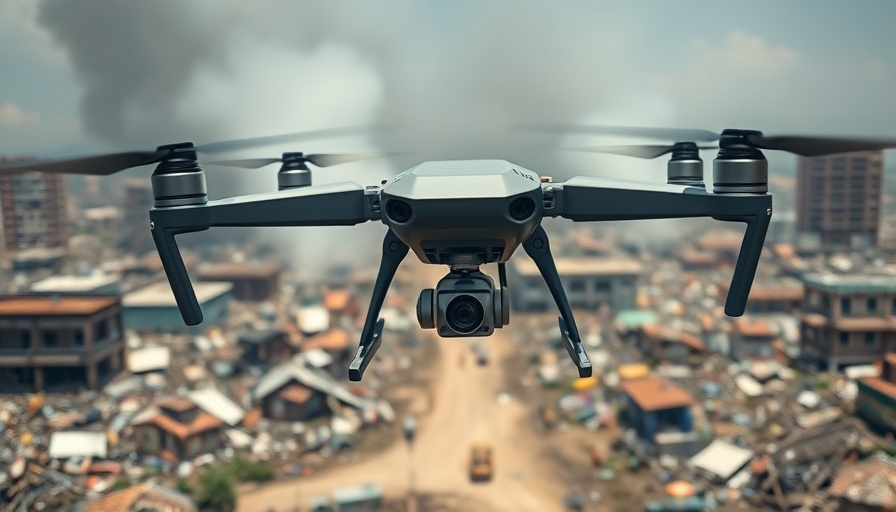
Revolutionizing Disaster Response with Drones
The recent launch of the BEP Port Disaster Prevention System by Japanese company Blue Innovation marks a significant step forward in how coastal communities respond to natural disasters. Following a record-breaking 8.8 magnitude earthquake off the Siberian peninsula that rattled nations across the Pacific, Japan has recognized the urgency of improving disaster communication systems. This innovative drone-based warning platform not only enhances the speed of alerts but also ensures a broader reach, ensuring that vital information and evacuation orders are disseminated efficiently.
How the BEP Port Disaster Prevention System Functions
At the core of this system is its reliance on automation. When the country's central emergency alert system, known as J-Alert, triggers a disaster warning, drones are launched from designated drone ports. These drones take flight above high-risk coastal zones, broadcasting essential evacuation messages while capturing real-time footage of the affected areas. This eliminates the need for human operators during critical moments, providing an instantaneous, safer, and more effective response to the impending dangers of tsunamis, earthquakes, and floods.
Strategic Importance for Japan
Japan's geographical position makes it particularly vulnerable to natural disasters. For towns along the coast, the ability to communicate evacuation orders swiftly and effectively is crucial. The BEP system addresses these challenges by automating alerts that directly reach surfers, tourists, and residents, particularly in rural communities where the workforce may be scarce or where traditional communication routes might be obstructed. As the system proves successful in real-time tests in Ichinomiya and Sendai, it showcases the potential for widespread application across Japan.
Impact and Real-World Applications
In real-world scenarios, the BEP system has successfully operated in Ichinomiya, a coastal town known for its surfing culture, where drones can instantly take flight during a tsunami warning, notifying all those in hazard-prone areas. Meanwhile, Sendai has integrated this technology as a supplementary measure alongside existing warning systems, improving their defenses since the catastrophic earthquake and tsunami of 2011. This dual approach reinforces the importance of leveraging new technologies to ensure community safety.
A Vision for the Future
As Blue Innovation continues to enhance the BEP system, the vision is clear: to standardize drone-based emergency alert systems across the nation. The potential applications extend beyond just tsunamis; this technology can play a pivotal role in response strategies for floods, earthquakes, forest fires, and even volcanic eruptions. By embracing these advancements, Japan aims to safeguard its communities, particularly the aging populations in vulnerable areas, all while significantly increasing the effectiveness of emergency responses.
Conclusion
Innovation like the BEP Port Disaster Prevention System is not only a testament to engineering prowess but also a lifesaver in moments of crisis. As these technologies evolve, they hold promise not just for Japan but for disaster management globally. Embracing the power of drones and automation could redefine the landscape of emergency preparedness, saving lives where time is of the essence. For technophiles, drone enthusiasts, and industry professionals alike, the future of disaster response is here.
 Add Row
Add Row  Add
Add 




Write A Comment